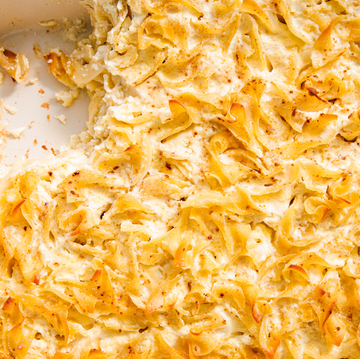Most commonly served with cream cheese, tomato, and red onions on an everything bagel, lox is a crucial part of a New York staple. As delicious as they are, those few slices on your bagel can set your wallet back quite a bit—which is all the more reason to make lox at home.
What is lox?
Derived from the Yiddish word for salmon, lox is cured salmon. Our version below is more akin to gravlax, which is a Nordic variation that includes dill and juniper alongside the basic salt and sugar cure. All of these additional herb and spices are optional: for unadulterated cured salmon, you only need salt and sugar.
Lox is different from smoked salmon, which requires an additional process of gently smoking the cured fish by using low heat from burning wood chips over a long period of time. Although some lox continue on to a cold-smoke for additional flavor development, our version keeps it cool and simple by skipping the intensive smoking process that can be difficult to achieve at home.
Notes on fish safety
Lox is cured, but it is not cooked—which means it's super important that you buy good quality fish for this recipe. While we call for "sushi-grade salmon" in the ingredients, know that this term is frequently used as a marketing term by the retailer and is not a federally-regulated, standardized marker of freshness. It is totally up to your vendor to determine which pieces of fish qualify as "sushi-grade," so make sure you trust your fishmonger!
There are two main concerns when it comes to eating raw fish: bacteria and parasites. To limit the level of bacteria present on your fish, buy your fish from a good source, keep it chilled below 40°F at all times, keep your work surfaces and tools clean, and work quickly at room temperature. Given the full 36 hours of curing, the amount of salt present in your spice mix will kill off small amounts of lingering bacteria if you've handled the fish properly.
Parasites can be killed by thoroughly cooking fish to an internal temperature of 145°F. When eating raw fish, parasites are a risk you're going to have to be willing to take, but there are ways to minimize this risk. Some advise purchasing farm-raised salmon because parasites occur more frequently in freshwater fish. However, the best way to eliminate potential parasites is to ensure your raw fish has been industrially frozen; average home freezers do not reach low enough temperatures to properly destroy parasites.
The 3 core ingredients
As long as you have sugar and salt, your fish will cure. In our case, brown sugar is great if you want to add a light touch of molasses flavor to the cure, and kosher salt is recommended here for its flake size: not too coarse, not too fine, gentle on the fish, and just salty enough. If you want to substitute in sea salt or other varieties, go with 140 grams by weight. We do not recommend table salt: its taste can lean on the bitter side and its superfine grains will cure your fish way too quickly before the other flavors have had enough time to sink into the flesh.
Coarsely ground black pepper will add a classic base note of fragrant, toasty heat that balances well with the sugar. If you don't have or don't like juniper, caraway, or dill, you can use any of your preferred spices: red pepper flakes or cayenne for a spicy kick, paprika for smokiness, coriander or star anise for a vaguely sweet-savory combo.
Length of your cure
36 hours of curing will lead to a medium cure, where the flesh of the fish has firmed up noticeably but not so much that it feels tough. As you flip the fish during this time, you'll notice a gradual loss of moisture as the sugar and salt draw the water content out of the fish. The longer the fish sits in the cure, the saltier and firmer it will become. For a hard cure, shoot for at least 48 hours in the fridge.
Once the lox is rinsed of the cure and patted dry, you can slice and serve right away or refrigerate uncovered overnight before eating to allow it to firm up a bit more. We recommend eating the lox within 5 days for optimal taste and freshness.
If you've made this recipe, write us a note down below to let us know how you liked it!














